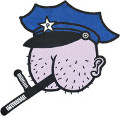Great point about the flywheel preparation (don't get any liquid or oil between the flywheel and crank)
If using a single flywheel dowel, it will make the flywheel unbalanced (maybe that's why they had to balance it?) Normally two or three dowels are use evenly spaced on the flange so they the balance each other
Here is some information we've compiled over the years:
Quote:
Nissan flywheel bolts are very strong. Just clean the threads and use a torque wrench to install. ARP does not make A-series flywheel bolts (though some use non-A-series ARP bolts on the A-series). In any case the stock bolts are plenty strong.
Best practices:
* Reusing the flywheel bolts is acceptable. Even new bolts will come loose due to shaking. Even ARP bolts will snap!
* To reduce vibrations, always re-balance the engine after changing rods or pistons or crank
* For 7000+ rpm use have the flywheel doweled. Loctite is not needed.
* Do not get the flywheel bolt "good and tight", as overtightening weakens them. Always use a torque wrench.
* Use stock Datsun flywheel bolts. If using aftermarket bolt, ensure they are 1) not too long and bottoming out 2) ensure the head face shoulder design is compatible 3) Use high strength steel like the factory bolts
If using high RPM, look at getting the crank flange dowelled. The flywheel is actually clamped on the head of the bolt not on the shank of the bolt (there is side-to-side play), so three dowels 120° apart should do the job. The end of the crank is soft unlike the journals and easy to drill.










 Transfer
Transfer







